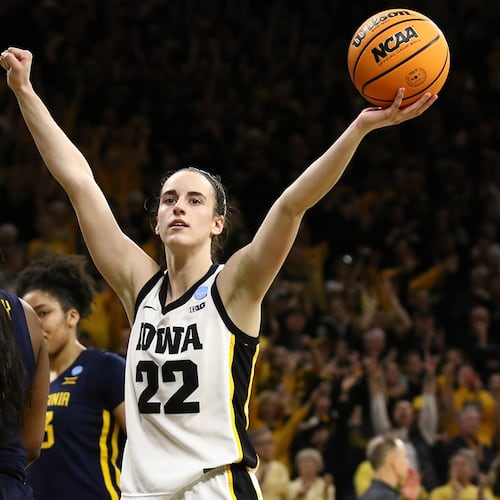It seemed the crowning achievement of a quietly brilliant career. ACC Commissioner John Swofford secured the league’s 15 schools (counting Notre Dame) by having each sign a grant of media rights, which meant any program that bolted for another conference would pay the ACC what it would have earned, media-wise, had said program stayed put.
This was in 2013. Maryland had just announced it was jumping to the Big Ten. This was Swofford’s response: You’re free to leave but, by contractual agreement, your deepest well of money will still come to us – through 2026.
Know how many programs have vacated the ACC in the years since? None.
That could, however, be subject to immediate change. USC and UCLA last week declared they’re headed to the Big Ten, which would render the Pac-12 the least powerful of the Power Five, even below the Big 12, which is losing Texas and Oklahoma to the SEC. On Tuesday, Dennis Dodd of CBS Sports reported the Big 12 is looking to poach what’s left of the Pac-12. Truth to tell, there’s not much left on either side.
The Pac-12 countered by announcing it was prepared to open negotiations regarding its next TV contract, which is set to take effect in 2024. This would seem a case of closing the barn as two thoroughbreds gallop over yonder horizon. There’s thought the Pac-12 and the Big 12 could merge. Who wouldn’t love a rivalry between TCU and Oregon State?
There’s also thought that the ACC is in trouble. In 2020-21, the conference distributed $36 million in media money among its members. The SEC handed each of its 14 schools $54M over that fiscal year. The Big Ten’s payout was $57M. This is where grant-of-rights gets tested.
Revenue in the SEC and Big Ten keeps rising. It’s possible a big-time ACC football program – the list begins and ends with Clemson – could choose to leave for the SEC or Big Ten knowing it will make more even after its ACC exit fee. In 2013, even Swofford couldn’t have seen that coming.
His other great swoop was to bring Notre Dame into the ACC in everything except football – with the proviso that, should Notre Dame opt for conference football, it had to be in the ACC. That line of thinking likewise is dated. The Fighting Irish could buy their way out of any contract.
Fifteen schools have won an FBS national championship since 1991. Twelve are either SEC or Big Ten members or headed that way. The exceptions: Clemson, Florida State and Miami. FSU last played for a title in January 2014. Miami last did it in January 2003, when it was in the Big East.
If you’re part of the SEC or Big Ten now, you’re not leaving. The last school to depart either league was Tulane from the SEC in 1966. (Georgia Tech exited two years earlier.) There’s still prestige in ACC basketball, but football has come to dwarf all other sports.
The SEC is furious that the Alliance – the Big Ten, ACC and Pac-12 – voted against expanding the College Football Playoff. Never a gracious loser, the SEC has envisioned an intramural, as it were, postseason tournament. Should it desire a partner, the Big Ten – which fractured the Alliance by stealing USC and UCLA – would be the one and only candidate.
With the L.A. duo looking eastward and the Red River rivals SEC-bound, how many football fortresses will exist outside The New Power 2? Notre Dame, yes. And Clemson. That’s about it. It’s hard to see where the ACC can turn to strengthen itself. It’s easier to imagine Dabo Swinney saying, “Get us out of here.”
We should have known that the Power Five wouldn’t stand forever. Even with their supposedly shared interests, the five never agreed on much. Minus their twin tentpoles, the Big 12 and Pac-12 are minor-league. With Clemson having a lesser year, the 2021 ACC champ was Pittsburgh, which ranked 12th in the final CFP standings.
Counting Notre Dame, the Power Five included 63 schools last season. Between them, the SEC and Big Ten soon will number 32. Nobody’s sure where all this will end, but options are dwindling. The Big 12 has added BYU, Cincinnati, Houston and Central Florida. It might annex what’s left of the Pac-12, which would create a 22-team league with flagships located in Eugene, Ore., and Stillwater, Okla.
Would the ACC look to join the Pac/Big 12s? What’s the upside there? Apart from pressuring Notre Dame to expand its membership to include football, what’s left for the ACC?
Beats me. And if the Irish go anywhere, it’ll be the Big Ten.
About the Author
The Latest
Featured



